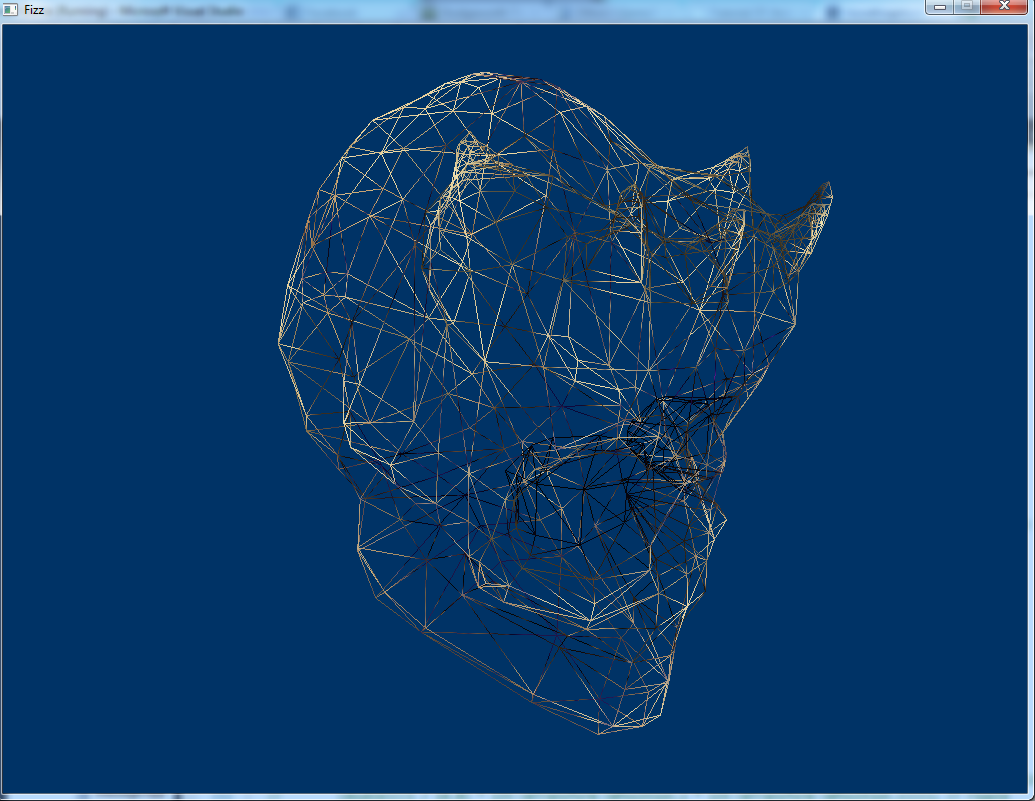With summer school over, I took a small break from doing anything to recharge. I’m usually pretty unrelenting about working, but sophomore year had been especially draining. After that break, I got started on implementing a basic Phong based lighting model.
The two major improvements here are a single directional light used for illumination and normal mapping on the skull model. The illumination uses no global ambient to prevent the scene from being nearly pitch black, which makes for a really excellent screen capture. Also, the process by which I read in normals from the mesh file was undoing the work the artists had done in applying smoothing groups to the model, thus the incredibly blocky nature displayed here. For as much of a step forward as this was, it was also a very primitive step.
This image was taken on 9/7/12.

GoodGraphics08.png, basic lighting and normal mapping.










